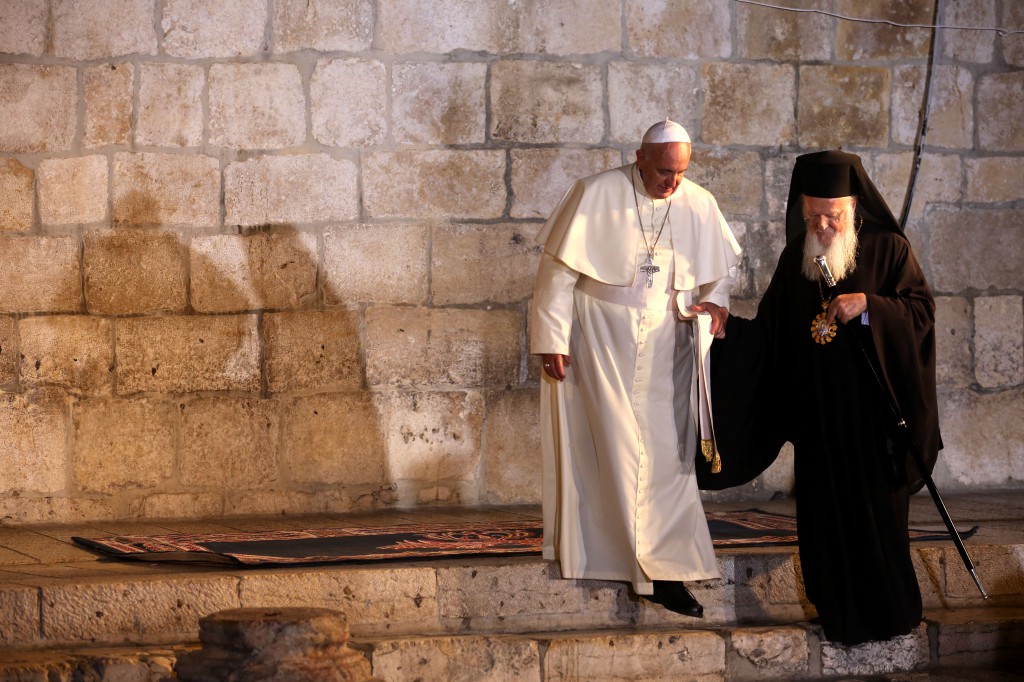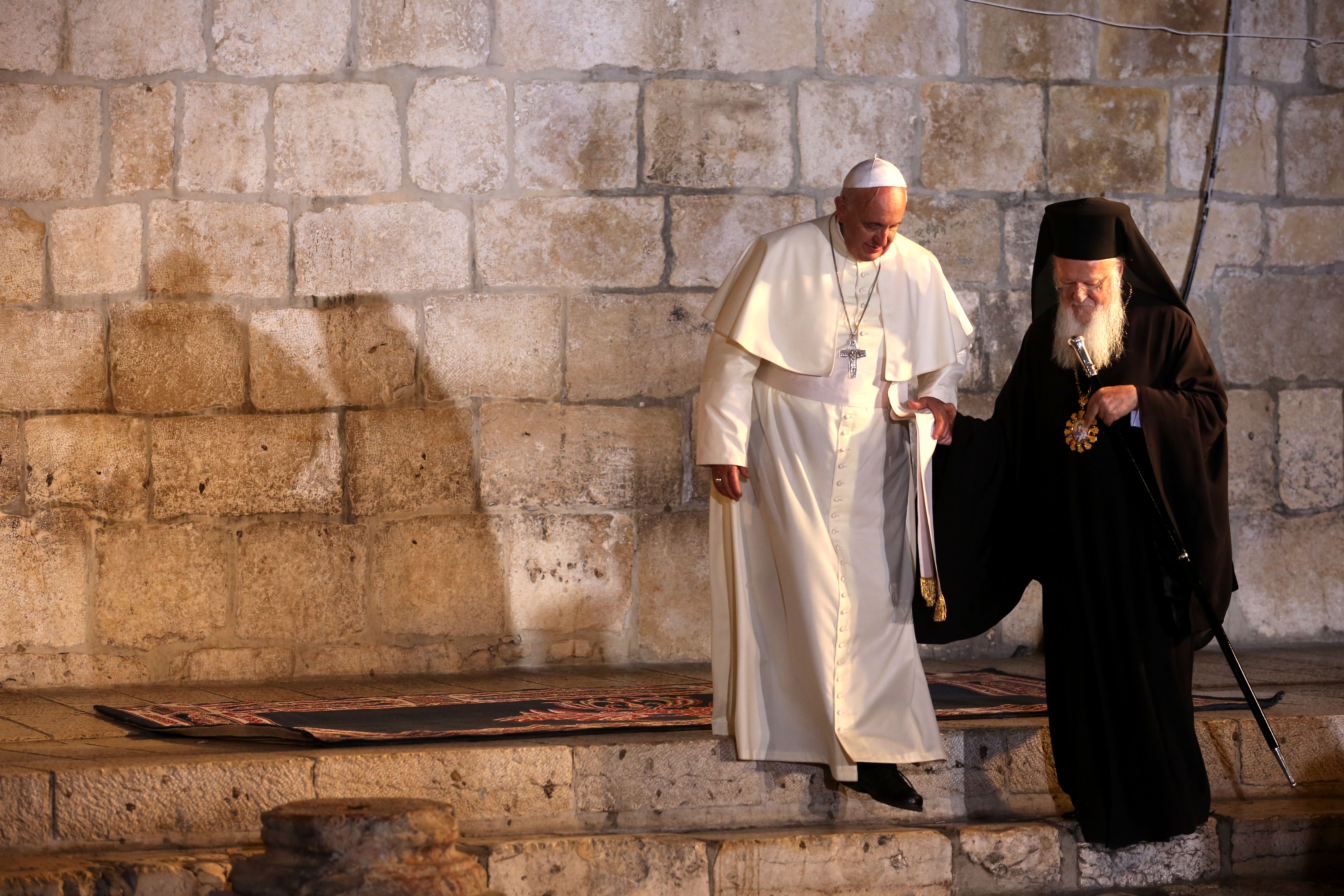
JERUSALEM — Nearly 1,000 years after the schism between the Catholic and Orthodox Churches, their respective leaders embraced and prayed inside Christendom’s most revered site, the Church of the Holy Sepulcher, May 25.
Perhaps nowhere else on earth is the division among Christian churches seen more profoundly than here. The 12th century Church of the Holy Sepulcher was built on the site where Jesus was crucified, died and was buried and is under the control of six branches of Christianity, including the Roman Catholic Church and the Orthodox Church. Scuffles have erupted over the years when monks from the various churches overstepped bounds.
Outside the Church of the Holy Sepulcher, high above the façade, the “Immovable Ladder” remains perched next to a window. A monument to the tragic division in Christianity, it has stood in place since the 18th century, having been moved temporarily on only two occasions. Nothing in the Church of the Holy Sepulcher can be moved or rearranged without the consent of all six Christian churches.
In their historic meeting, Pope Francis and Ecumenical Patriarch Bartholomew I took a step toward healing old wounds. The two leaders marked the 50th anniversary of the encounter between Pope Paul VI and Patriarch Athenagoras in the Holy Land in 1964 that ended 900 years of estrangement.
Fr. Federico Lombardi, director of the Vatican’s press office, told The Catholic Sun that this year’s meeting was a way to work toward goals such as unity, peace and justice and stewardship for creation.
“The message is clear from 50 years on,” Fr. Lombardi said. “We are on the way of a profound desire for unity, for mutual understanding and for collaboration for peace.”
‘Fraternal encounter’
Pope Francis and Ecumenical Patriarch Bartholomew issued a “Common Declaration” that enumerated their shared concerns and goals. The declaration did not attempt to gloss over differences but instead spoke of a “fraternal encounter” and their “eager anticipation of the day in which we will finally partake together in the Eucharistic Banquet.”
After centuries of silence, the 1964 meeting between Pope Paul VI and Patriarch Athenagoras “paved the way for a momentous gesture, the removal from the memory and from the midst of the Church of the acts of mutual excommunication in 1054,” the declaration states.
“Over these years, God, the source of all peace and love, has taught us to regard one another as members of the same Christian family, under one Lord and Savior, Jesus Christ,” the declaration states.
Dr. Anthony Limberakis, an Orthodox Christian and the national commander of the Order of St. Andrew the Apostle, traveled to Jerusalem for the joint prayer service between Pope Francis and Ecumenical Patriarch Bartholomew.
“After the prayer meeting at the Church of the Holy Sepulcher, Pope Francis kissed the hand of his brother,” Limberakis said. “Inside I was crying for joy to see that kind of mutual love and mutual respect.”
Unity between the two Churches is something Limberakis said the Orthodox pray for frequently. He lauded the meeting between the two leaders as helping to work toward that goal.
“What their predecessors did 50 years ago was intrepid, courageous, dynamic and visionary,” Limberakis said.
St. John Paul and Patriarch Dimitrios initiated theological dialogue between the two Churches in 1979. St. John Paul’s famous remark, that “the Church must breathe with two lungs” — East and West alike — is often cited by those who seek to build understanding between two branches of Christianity that split in 1054.
The Common Declaration also expresses concern for the suffering of Christians in the Middle East and emphasizes that “dialogue, pardon and reconciliation,” not arms, are the means to peace. The two leaders implored “believers of every religious tradition and all people of good will” to work together for “reconciliation and the unity of the human family.”







